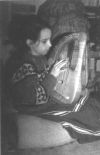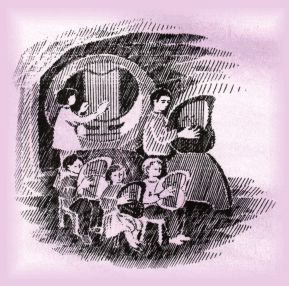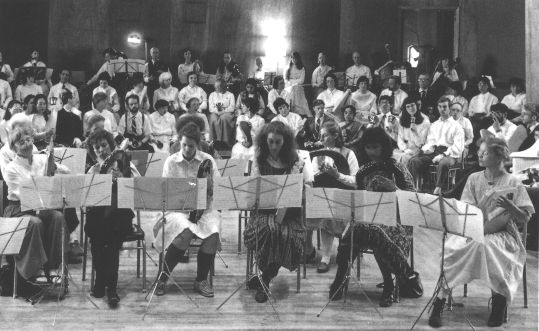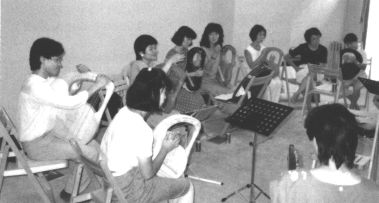|
Making music together
Tuition and Playing the Lyre in a group
by Willibald Helbich, Master Lyremaker and music teacher
|
 |
Initial motives The initial motives
which may eventually lead
one into a circle of Lyre
playersare manifold, and
each person will bring his
own gifts and wishes toward
this. The one may only wish
to be able to play a few
songs, another may look
forward to make music
together with others in a
way he is accustomed to already
by playing some other more
traditional instrument. Yet
another wants to bring to
more perfect expression the
specific quality of a particular
instrument. |
Therefore
I do not have a
fixed programme for teaching
the Lyre but try to meet the
pupil where his or her
interest lies and perhaps
particular capacities exist
already. Carefully and
avoiding any dogmatic
approach I try to meet the
various expectations,
and not put the newcomer off
with any prejudices,
leaving the Lyre to speak
for itself.
Play me a tune... Now, if someone
wishes to play ,,his particular
piece of music" I try to
facilitate this by arranging
the music to suit the instrument.
The effort has been worthwhile for
both parties even when it is
discovered that the particular piece
is not all that well suited for
the Lyre. |
At
the very least such
a favourite piece of music
will have led to a contact
with the Lyre and after this
initial beginning the person may
then be quite willing to turn
to other compositions.
Sounding together As the Lyre
favours expression
of primary and fundamental
phenomena of music, my first
endeavour is to awaken the
individually very different potential
for musicality. Listening to
my pupil or fellow player
I can get in touch with his
inner disposition and concerns.
Mutual understanding
brings us together and
forms the basis for practising
together. Once inner musical
harmony is formed it is
quite possible to overcome all
contradictions, the efforts of a
group are crowned when despite very
different characters and predisposition
s they achieve
breathing together to
sense and experience
as one, so that
the whole choir
of Lyres sounds
like a single
instrument. |
|
When
a
child becomes nine
years old it gains a
sense for realism.
Around that time the
instrument should be
re-tuned diatonically
to the well known
c - major scale, instead
of elements sounding
together in sympathy,
more formative ones are
introduced with this.
In this scale also
most of the known
songs can be played.
Increasing need to
practice will gradually
change a more
experimental kind of
playing into
consciously developed
music making. |
 |
 |
Concert
rehearsal
with twenty four Lyre
players and orchestra
in New York |
|
Everyone has a
part to play Music making
shall give pleasure,
and this usually
happens even if your
contribution is but
small. In a circle of
Lyre players I have to
work with different
abilities,If a piece of
music is demanding
I try to satisfy advanced
players by giving them
difficult parts, while for
those less practised
I will arrange a particular
voice or melody -
rearranging, simplifying
the music into easier
parts. Then each player
has manageable demands
made upon him or her.
In any group of players
one has to find the
balance between what
would either be too
difficult or too easy. |
Exploring musical scales Having
worked
together for a while
we may gradually
approach more difficult
tasks. Perhaps we
might travel through
the year with the
appropriate moods
for the month, with
the circle of the fifths.
Further musical studies
may concern: Intervais,
scales, harmonic and
rhythmic excercises,
improvisations and so on. |
We
work on these themes
within a context of the
,,General Study of Man",
hoping to reach a better
understanding of new
contemporary music. |
|
 |
Lyre-group
of
Izumoto, Tokyo |

back
|